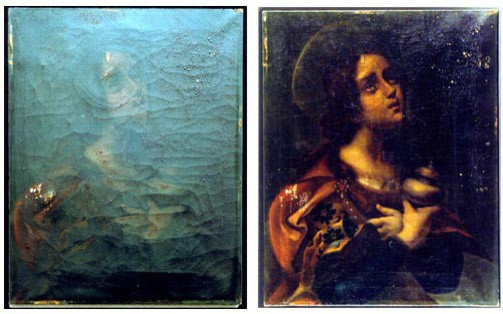NASA saves irreparably damaged works of art

NASA's Glenn Research Center has introduced a method wherein researchers use atomic oxygen to restore masterpieces that appear to be irrevocably destroyed.
The revolutionary system has helped to revive a number of damaged paintings of historical and cultural importance from museums, galleries and churches.
This includes a centuries-old, Italian copy of a painting by Raphael called Madonna of the Chair, belonging to St. Alban's Episcopal Church in Cleveland; a fire-damaged painting by Jackson Pollack; a stained Andy Warhol painting and smoke-damaged paintings at St. Stanislaus Church in Cleveland.
Atomic oxygen is very effective. In art restoration, it works so well... it's not something you can buy in a bottle, but then again, it's more effective than what you can buy in a bottle, stated Bruce Banks from the Space Environment and Experiments branch of the Glenn Research Center in Cleveland.
The method involves removal of organic contaminants from the damaged art-pieces using atomic oxygen. Without affecting the actual painting, the process removes all organic matter like carbon or soot.
The paint is not damaged as the pigments in paint are mostly inorganic and have already been oxidized. Besides this, the organic pigments can also be preserved by carefully timing the exposure to atomic oxygen. It also does not affect the canvas as it only reacts on the surface of the painting.
A total of 20 to 400 hours is required for the process where the artwork is placed in a vacuum chamber which creates the atomic oxygen. However, if only a specific segment of the art piece is damaged, a pencil beam can be used for the process of restoration, thereby, eliminating the need to place it in a vacuum chamber.
© Copyright IBTimes 2024. All rights reserved.





















